Combined Data
The graph below shows how four of our big metrics for tracking the COVID-19 pandemic are tracking over time. Cases are represented by the blue line and correspond with the left y-axis. All other metrics correspond with the right y-axis. The reason I graph all of these things together is so that we can see the way these things trend together (or differently) over time.
Remember, the previous week was a holiday week, which usually means delayed reporting. We might expect some of those delayed reports to come in during this most recent week. It’s not surprising then, that some of the metrics increased this week. It’s unclear how much of this is delayed reporting versus true increase. Cases were flat, rising only 1% for the week. Deaths decreased by 8%. But hospitalizations and ICU admissions rose by 11% and 15%, respectively this week.
Testing
The PCR test output trend over time can be seen in the graph below, represented by the blue line that corresponds with the left y-axis. The red line represents the test positivity rate over time, and corresponds with the right y-axis. The gray dashed line is the goal line for test positivity.
PCR testing output rose 21% this week (blue line) and the state’s PCR positivity rate decreased to 1.7% for the week. The state’s PCR positivity rate has been below 5% for the past 7 weeks.
Antigen testing was pretty flat, decreasing by 3% and the positivity rate remained the same, at 2.6%. Antigen test positivity in Georgia has been below 5% for the past five weeks.
Combined, these data tell us that even though testing is being performed less than it has in the past, we still appear to be testing well enough that we are unlikely to be missing cases.
The DPH does not provide data regarding demographic details for cases identified by the antigen test. Keep that in mind as we go through the demographic data in the following sections. You’re only seeing part of the data. Meanwhile, antigen testing identified 31% of the cases this week.
Cases
The number of combined new cases (by date of report) through Sunday is as follows:
- 24 hours: 157 by PCR + 66 by antigen = 223 (+0.02%)
- 7 days: 1770 by PCR + 786 by antigen = 2556 (+0.2%)
- 4 weeks: 9,166 by PCR + 3923 by antigen = 13,089 (+1.2%)
The 7-day case rate per 100,000 is shown below for the state and for different county types in the state. For the past few weeks, we’ve seen very little variation across county types. However, that is changing this week for rural counties (yellow line below). If we compare the 7-day case rate to where we were on June 1, all other county types are flat or decreasing (i.e. Atlanta suburbs). But the 7-day case rate for rural counties has risen 32% in that same period of time. This is a group that I’ve been worried about, given their low vaccination rates and the disproportionate death they’ve experienced since the start of the pandemic.
Regarding the demographic data graphs, I need to point out that there is an extra day’s worth of data represented. I am switching the data collection for this to Sundays (previously was gathered on Saturdays). Cases are declining or flat in most age groups. However we saw small increases for those 10-17, 30-39 and 50-59. We saw larger increases for 18-29 and 80+. Again, some of this may be delayed reporting, or it could be a result of the extra day’s worth of data included. Things should be better on both accounts a week from now.
Hospitalizations
The number of new hospital admissions (by date of report) as of Sunday is as follows:
- 24 hours: 15 new COVID-19 admissions, 2 admissions to the ICU (weekend reporting is typically light)
- 7 days: 322 new COVID-19 admissions, 142 ICU admissions
- 4 weeks: 1709 new COVID-19 admissions, 499 ICU admissions
ICU admissions are starting to tick up a bit more than the noisy variation we’ve seen in the past. It’s too soon to know if this is the beginning of a trend, but it is something to keep an eye on for now.
When considering the hospital admissions by age, this week shows a rebound after the holiday week for those 60-79. Even so, the week’s hospitalizations are lower than each group saw two weeks ago, before the holiday impact. So it’s a good sign to see those numbers in a lower spot.
Deaths
The number of new confirmed deaths (by date of report) is as follows. The percentage in parentheses indicates how the increase compares to Georgia’s cumulative total at the start of each window of time.
- 24 hours: 1 confirmed, -1 probable deaths (data correction, most likely)
- 7 days: 121 (+0.7%), 28 probable deaths
- 4 weeks: 488 (+2.8%), 131 probable deaths
This week there was a newly reported pediatric death, in a 14-year old boy from Clayton county. His is the eleventh pediatric death associated with COVID-19 in Georgia to date. You’ll see his death represented in the age group graph below.
This week, deaths increased for those 40-59 and 70-79. Remember, these are preventable deaths - we weren’t able to vaccinate these people in time due to access barriers, hesitancy, or other factors. It’s not too late to get a COVID-19 vaccine to avoid the worst that this virus can do.
I noted that case rate was increasing in rural counties up above. The same trend can be observed in 7-day death rate. Whereas the 7-day death rate has decreased for all other county types in the past week, it has risen 28% in rural counties in the past week. This too could be part of the delayed reporting impact of Memorial Day weekend.
So in summary, something may be brewing in rural counties in Georgia. It could be an artifact of delayed reporting due to the Memorial Day holiday, or it could be the start of a more sustained increase in a population with low vaccination rates (pretty scary). We need more time to know for sure.
A few personal updates here.
I’m going on vacation this week starting Wednesday. I will be in remote settings with limited access to WiFi for the following 3 weeks. So I may be able to post brief updates while I’m on the road, but they will most likely be on Twitter. You’re welcome to follow me there.
I wrote a freelance piece on COVID-19 vaccine safety questions for pregnant women in the online publication, Technology Networks. Last week, this piece on why mRNA vaccines could be a game changer was also published. These articles are freely available to the public.
This week I accepted a job offer to become the Chair of the Division of Natural Sciences and Mathematics at University of Saint Mary in Leavenworth, Kansas. It's a small, liberal arts school that is really focused on mission and values - things that speak to my goals of doing as much good as I can, wherever I can. I’m excited for this opportunity to develop as a leader and administrator. When I graduated from my PhD program, my biggest goal was making a difference. That's what called me to public health. And I've made a big difference in that space in the past year - possibly the most important work I've ever done. But the pandemic has revealed that we have a long way to go to cultivate a society of critical thinkers, people who value data and evidence and those who can communicate science effectively. And that is where I think I can do the most good going forward. One of the classes I’m hoping to teach this fall is called Science and Society. As you can imagine, it’s a lot of the same work I’m doing here on the newsletter, but beyond public health and the pandemic.
For the past year, this newsletter and some other freelance work has been my full time job, next to making sure my son did well in virtual school. So I was able to keep up on the latest research and data, watch ACIP meetings happen live, etc. I am enormously grateful to my subscribers who have financially supported this work to give me this flexibility. Professionally, it has been a tremendous year of personal growth. When I resigned from Mercer University School of Medicine in July 2020 to prepare for our move to Kansas, I remember pinging my colleagues on the Georgia COVID-19 Data Task Force, expecting that I would no longer be working with them because I no longer had a professional affiliation. I was just a volunteer from that point forward. I remember one of them told me that the affiliation never mattered - my brain and ability to explain what the public needed to see in the data was what mattered. And in the past year I have spoken alongside powerful people and sat in meetings in the “[zoom] room where it happens” without an affiliation. I’ve worked with members of the media at all levels, many of whom I consider friends now. I have done a handful of job interviews in the past few weeks, resulting in multiple offers (hooray!). And I’ll tell you what, all of those high stakes media interviews and speaking engagements meant that I had no fear or anxiety about job interviews at all. So all of this to say (without sounding too cliche) that we are defined by more than our job title. Up until a week ago, I still didn’t know how to properly identify my “job title” when asked. But I can tell you that I have placed far too much value in job titles in the past.
After returning from vacation, the newsletter will shift to a weekly update like this one that is Georgia focused and a weekly edition that is Current Events in Public Health for paying subscribers.
References
https://dph.georgia.gov/covid-19-daily-status-report
https://covid-gagio.hub.arcgis.com/
https://beta.healthdata.gov/dataset/COVID-19-Reported-Patient-Impact-and-Hospital-Capa/6xf2-c3ie
Georgia COVID-19 Updates is a free newsletter that depends on reader support. If you wish to subscribe please click the link below. There are free and paid options available.
My Ph.D. is in Medical Microbiology and Immunology. I've worked at places like Creighton University, the Centers for Disease Control & Prevention and Mercer University School of Medicine. All thoughts are my professional opinion and should not be considered medical advice.



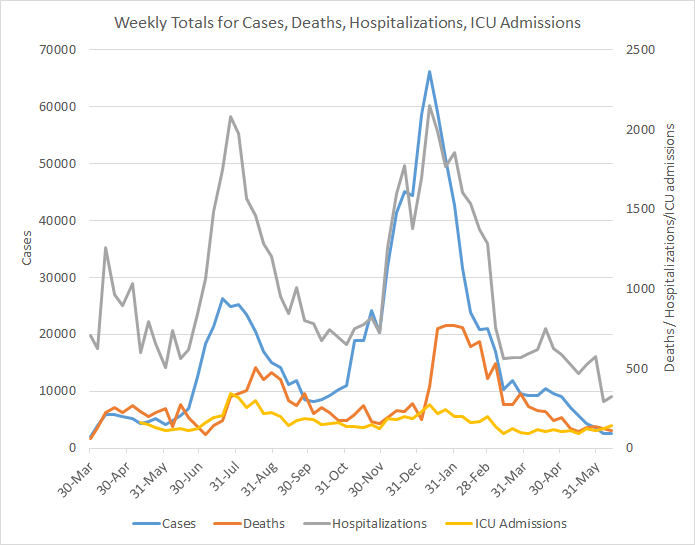
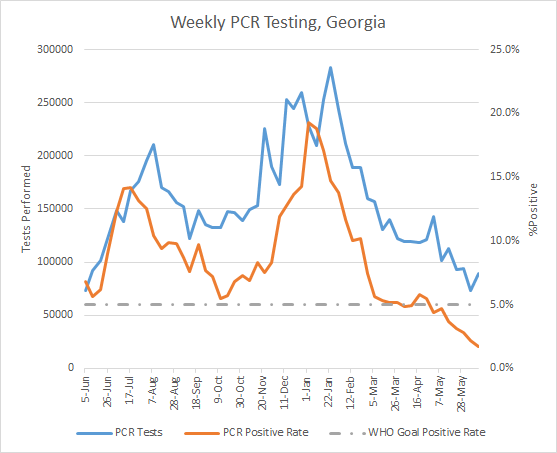
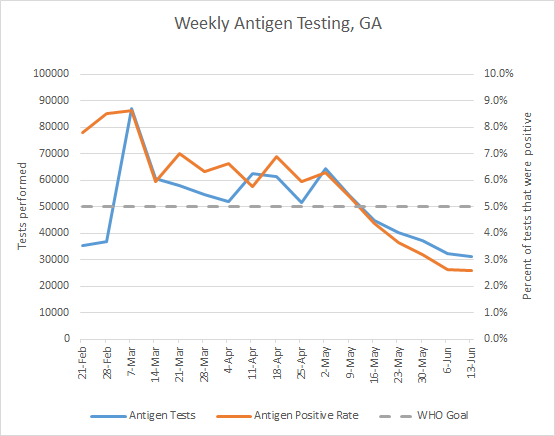
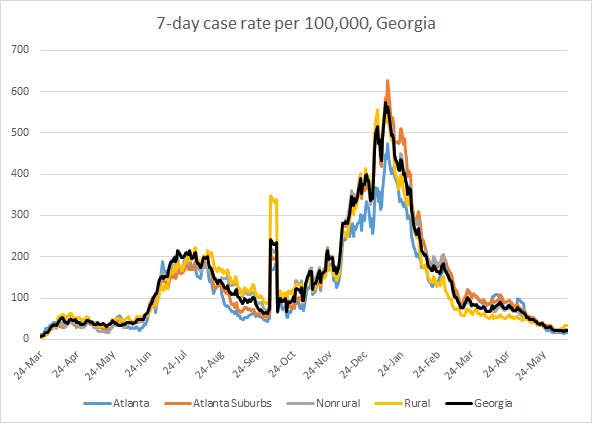
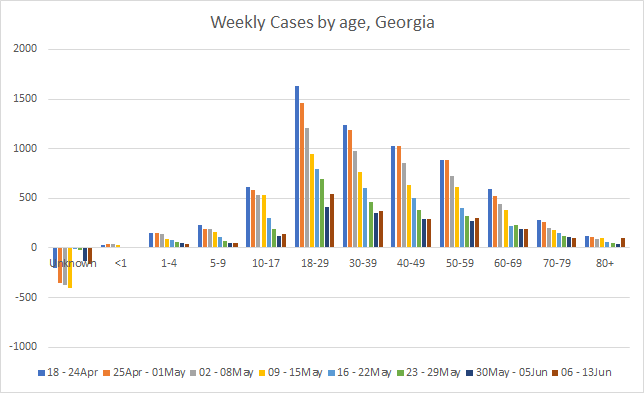
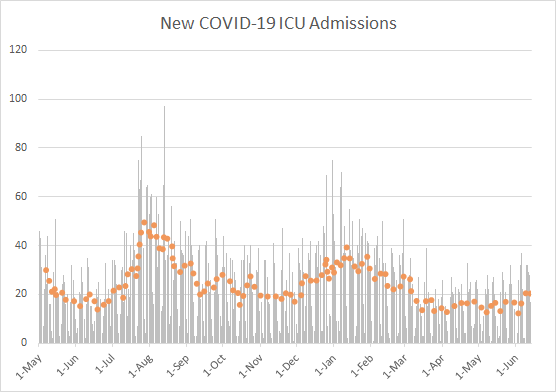

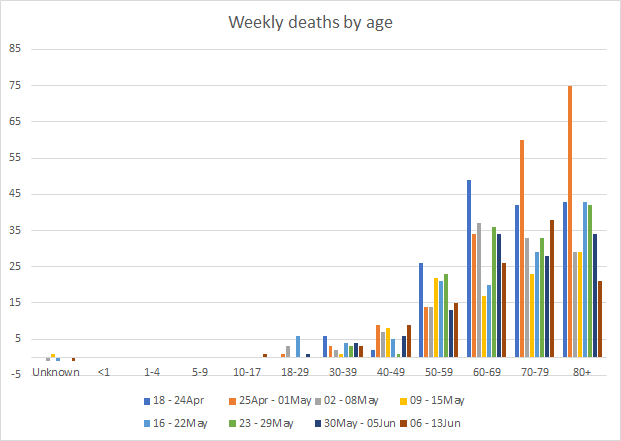
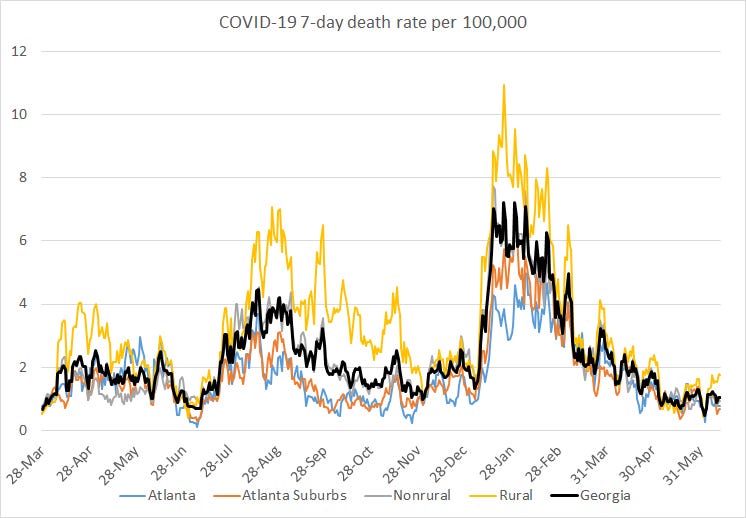

Good morning, I just switched to a paid subscription but I don't see any updates more recent than 7-13 June (writing this on July 1). Is anything new available? Thank you!
Thank you so much for keeping us up to date for the past 15 months. I relied on your data when there was so much disinformation. I am so appreciative.